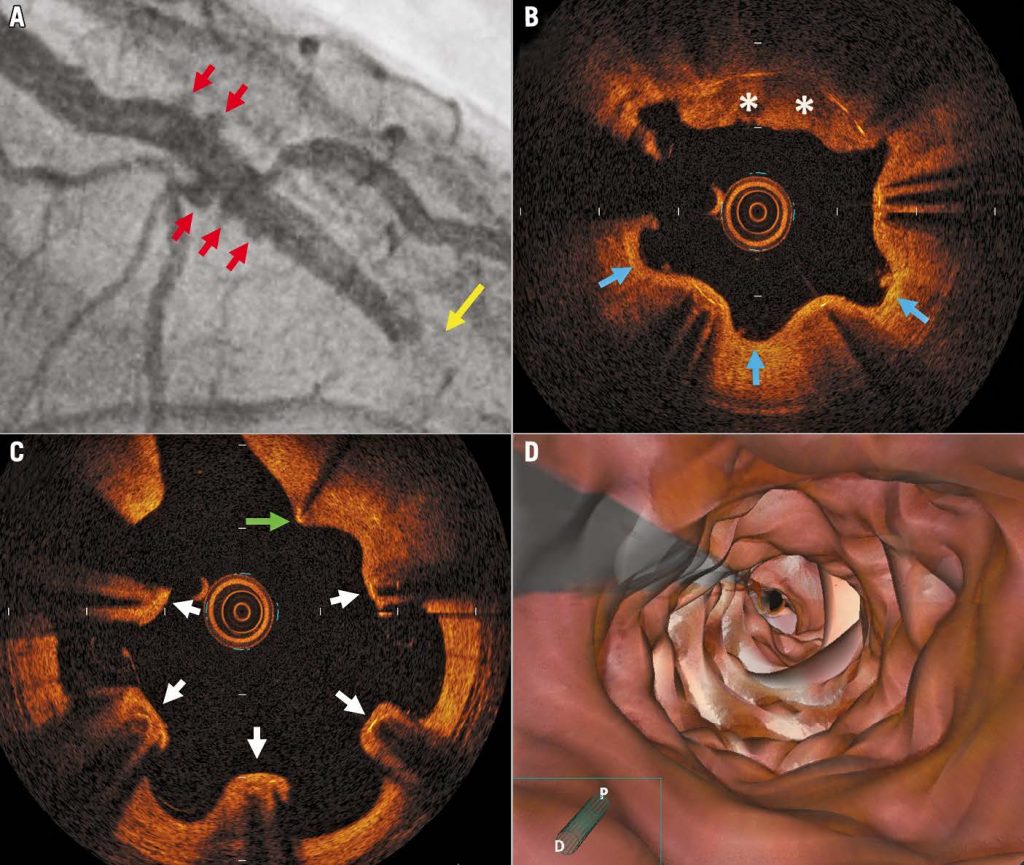Chee Yang Chin, Swee Leng Kui, et al
AsiaIntervention 2017;3:162-163, DOI: 10.4244/AIJ-D-16-00029
A 45-year-old man presented with acute anterior ST-elevation myocardial infarction four years after the implantation of two 3.0 mm diameter first-generation sirolimus-eluting CYPHER® (Cordis, Johnson & Johnson, Warren, NJ, USA) stents in his left anterior descending coronary artery. Emergent angiography (Moving image 1) now revealed a thrombotic occlusion of the distal stented segment (Panel A, yellow arrow), with peri-stent contrast staining in the proximal stented segment (Panel A, red arrows). Following thrombus aspiration, optical coherence tomography (OCT) (Moving image 2) showed positive arterial remodelling throughout the previously stented segments causing vessel evaginations (Panel B [blue arrows], Panel C) and malapposed stent struts (Panel B, Panel C [white arrows]), with occasional uncovered stent struts (Panel C, green arrow) and residual thrombus (Panel B, *). Three-dimensional OCT reconstruction displayed a highly irregular luminal surface (Panel D). He was successfully treated with stenting of the occluded segment with a third-generation drug-eluting stent. Localised hypersensitivity and inflammation related to first-generation sirolimus-eluting stents may induce positive remodelling, leading to late stent malapposition. While first-generation sirolimus- eluting stents have been phased out of use in recent years, the clinical impact of very late stent thrombosis due to late stent malapposition and uncovered stent struts may continue to be seen in the coming years.

[/custom_font]